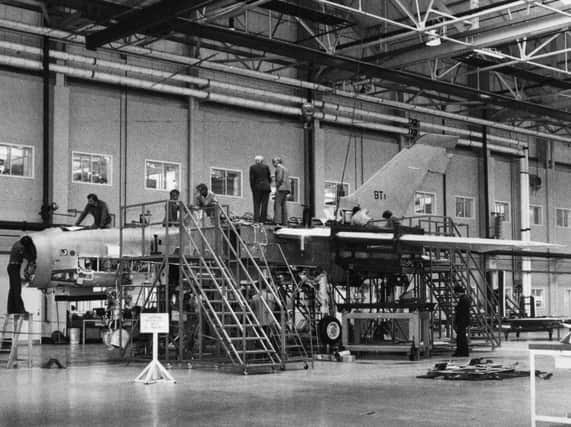Looking back at Warton's role in getting RAF Tornado fighter off the ground


It played a major part in the Gulf War.
It was at one time vital to the economy of South Fylde and Preston.
But, after almost 40 years of RAF service, the Tornado jet – part built in Lancashire, on the Fylde coast – is set to be retired.
Advertisement
Hide AdAdvertisement
Hide AdThe aircraft was developed by a consortium of three companies, in three counties, together known as Panavia Aircraft. They included British Aerospace, MBB of West Germany and Aeritalia, of Italy.
Due to its multi-role design, it was able to replace several different fleets of aircraft in the adopting air forces.
The Tornado was designed to be a high-speed fighter plane – able to hug the ground, while at the same time travelling so fast it could smash the sound barrier.
Its trademark swing-wing features enabled it to attain different degrees of manoeuvrability and speed.
Advertisement
Hide AdAdvertisement
Hide AdAnd at high altitude, it could fly at twice the speed of sound.
The front fuselage and tail assembly was assigned to BAC (now BAE); the centre fuselage to MBB in West Germany; and the wings to Aeritalia, in Italy.
The contract for the Batch 1 aircraft was signed in July 1976.
The Tornado had first taken flight in 1974 and was introduced into service in 1979.
Advertisement
Hide AdAdvertisement
Hide AdThe Gazette reported how the very first flight had lasted one hour – from Warton airfield with Paul Millett, then chief test pilot, at the controls. He was also at the controls when the first ever prototype made its maiden flight in Manching, West Germany, in August 1974.
After the historic Warton flight, Mr Millett – of Mellor, near Preston – declared “the aircraft is a delight to fly”.
The second pre-production Tornado P12 flew from Warton in March 1977.
Our archive picture, from October 1978, shows the first production Tornado being assembled at Warton, where a giant £2.3m hangar and production line had been specially built. The first aircraft was a dual-control trainer – designed for the Tornado training centre to RAF Cottesmore where crews from the RAF, Germany and Italy would train.
Advertisement
Hide AdAdvertisement
Hide AdThe first aircraft were delivered to the RAF and German Air Force in early June 1979.
The Gazette reported how the first production version of the aircraft rolled off the production line, in 1979, at British Aerospace, Warton – in front of 100 VIPs including defence secretary Frances Pym.
In March 1984, to mark its 10th year, then secretary of state for defence, Michael Heseltine visited BAE and was pictured in the cockpit of Tornado.
By the end of that year, nearly 400 Tornados had been built and more than 100,000 hours flown by the three nations – Britain, Germany and Italy.
Advertisement
Hide AdAdvertisement
Hide AdThe all-weather jet was first used in combat during the first Gulf War, in 1991, to conduct many low-altitude strike missions.
It was also used in conflicts in the former Yugoslavia – during the Bosnia and Kosovo War, the Iraq war, Libya during the Libyan civil war and has played roles in Afghanistan, Yemen, and Syria.
Production of the Tornado came to an end in 1998, with the last batch of aircraft going to the Royal Saudi Airforce – under a deal between BAE Systems and the Saudi government.
The final RAF Tornados will leave service before the end of March, with its capabilities transferred to the Typhoon.
Advertisement
Hide AdAdvertisement
Hide AdMaking the announcement, current defence secretary Gavin Williamson paid tribute to the Tornado: “I remember as a child seeing it flying over ahead as I grew up in Scarborough as it flew down the Vale of Pickering.
“It was a magnificent aircraft, but an aircraft that has done such amazing service for our country.”
Wing Commander Kev Gatland, Tornado Force Headquarters Chief of Staff, said: “I think everyone is incredibly sad to see the Tornado go, but there’s a reality that sits behind it that the future generation of aircraft, such as the Lightning and the Typhoon aircraft as well, really are the future of the next generation of the Royal Air Force.
“Whilst it’s tinged with sadness for everyone because so many people have spent so many years, if not careers working, servicing and flying this aircraft the reality is it’s time for it to move on now and for the future generation of the aircraft to take its place.”
To commemorate the Tornado Force, there will be fly-pasts around some stations that were Tornado bases in the coming months.